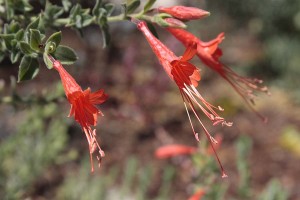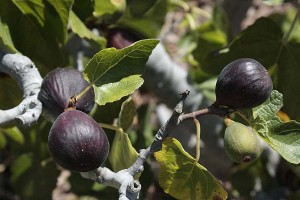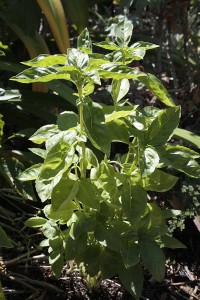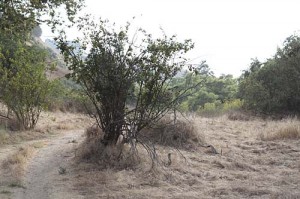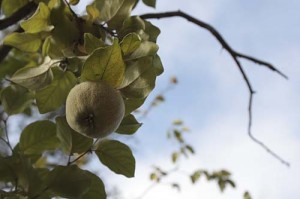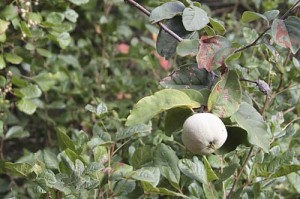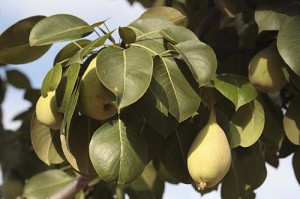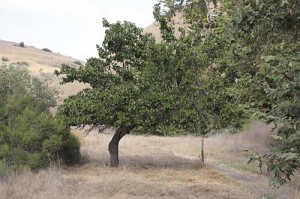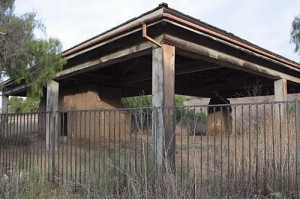Summer finally arrived last week. A humid mass of high pressure from Mexico hopped the border fence and gave us some hot days and tropical-looking morning clouds that lit up brilliantly as the sun rose.
After almost four months with a total natural rainfall of .05 inches much of the garden has been heading into its defensive dormancy. But a few plants seem to be reveling in the arrival of some real summer heat. Top of the list is this California fuchsia, the ‘Route 66’ cultivar, which opened its flowers to coincide with the hot weather. Some Epilobium species and clones have fairly small, gray-colored leaves, but this is one of those where the leaves a smidge larger and greener, a bright contrast to the screaming orange flowers.
Desert marigold, Baileya multiradiata, has been blooming away with the help of a little additional water, but not much.
In the bed that gets some irrigation the gingers are the current stars of the show. Coinciding with the California fuchsia was this kahili ginger, Hedychium gardnerianum, a plant that I’ve been growing since my early teens, a hand-me-down plant from one of my mother’s gardening friends. Sitting in the back yard after sunset is a treat with this insanely fragrant ginger nearby.
Of course summer isn’t all about the flowers. The fig tree is hitting its peak fruit production this week. It’s the variety ‘Brown Turkey,’ which is supposed to do well with less heat than what most other varieties require. This has been one its best years ever for me. I’m trying to figure out what went right this year, and I’m thinking the success has something to do with water. This past winter and spring actually delivered a slightly-over normal rainfall that was spaced evenly throughout several months. Also, last year I applied some water-conserving woodchip mulch over the bed that contains the fig. And John’ has made a point of watering the zone around the fig every other week or so. I hope to be able to repeat the success next year, which according to the prognosticators could be a drier than average La Niña year.
The garden herbs are doing well. A sixpack of parsley several months back is turning out to be way more than two people who use parsley once or twice a week. At least it’s a pleasantly textured plant for the front of a border.
A sixpack of basil, however, hasn’t seemed to produce nearly enough. Maybe the basil will pick up with the warmer weather.
Surprisingly the tropical lemongrass plants (both the East- and West-Indian versions) haven’t been sulking and are overproducing just like the parsley.
Adding to the pile of edibles, our neighbor Olinda stopped by with her grandson. It was all she could do to carry this giant watermelon. John was impressed with its size and suggested I weigh it: 30.8 pounds.
It’s one of the with-seed varieties that stores these days don’t seem to stock much anymore. Stunning rind, don’t you think? One of the many things we’re losing in part because of big agra.
I was hoping to save the watermelon for a day or two, until we had room in the fridge, but I was a little clumsy photographing its cool rind in detail. Now I know what a melon dropped 3 feet off a table onto a brick patio does. It stays in one piece, but you have to deal with it right away.
High summer also means the best cantaloupes of the season. This is Scooter helping us out by finishing a couple of half-melons we had for breakfast. The melon came from the local hybrid grocery-farmer’s market.
And so our summer begins: a little too much melon and a garden peaking with fruit and herbs. Life is good.

